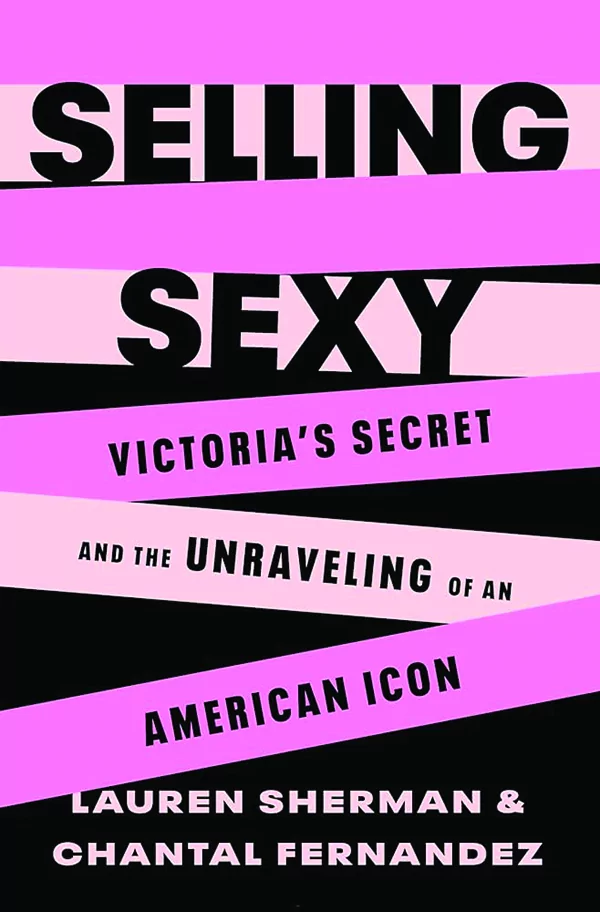You’ve heard the story of Victoria’s Secret before. Or at least, Aaron Sorkin’s short-hand version of it, as told by Justin Timberlake, against pounding nightclub music in The Social Network.

“A Stanford MBA named Roy Raymond wants to buy his wife some lingerie, but he’s too embarrassed to shop for it in the department store. Comes up with an idea for a high-end place that doesn’t make you feel like a pervert. He gets a $40,000 bank loan, borrows another $40,000 from his in-laws, opens a store, and calls it Victoria’s Secret. Makes a half-billion dollars his first year. Starts a catalog. Opens three more stores. And after five years, he sells the company to Leslie Wexner and The Limited for $4 million. Happy ending, right? Except two years later, the company’s worth $500 million, and Roy Raymond jumps off the Golden Gate Bridge. Poor guy just wanted to buy his wife a pair of thigh-highs.”
It’s a good story and even better parable, and it’s somewhat true. But Sorkin’s version misses a lot, and Selling Sexy, by fashion journalists Lauren Sherman and Chantal Fernandez, tells the rest. It isn’t just a story of pantyhose and personal tragedy.
It’s a tale of the rise and fall of a revolutionary merchant genius, Les Wexner; a history of the evolution of fashion retail; a business book about how companies change as they grow; and how brands marketed to women have had to change as women see themselves differently. Today, The Limited is dead, Wexner is gone, and Victoria’s Secret is a dying giant, with sales steadily decreasing over time. Raymond is a minor player in the full story. His suicide occurs only a third of the way into the book. In the years since David Fincher’s movie released, Victoria’s Secret grew even bigger, crashed hard, killed its famous runway shows, threw out its most notable executives, and has found itself struggling against new, more aggressive competitors, such as Kim Kardashian’s Skims.
Selling Sexy is divided into two main halves. The first is a classic business history story about the start of the brand and its context. The chapters are lean and focused, moving along at a pleasant clip, but with enough fun tangents into art collecting, choice architecture, U.S. tax codes, how Columbus, Ohio, changed, and so on.
My only real critique here is that, rather than being in the voice of its authors, the prose is so clean and edited down that it’s personality-free. It’s beige prose — the Represent Clothing of fashion writing. The Social Network extract sounds unmistakably like Sorkin, but I would never have known that Selling Sexy was co-written by Sherman, whose Puck newsletter Line Sheet is the most lively, characterful writing in fashion journalism.

Also, though the book doesn’t editorialize too heavily, it lets on certain curious opinions, for example, that the company should have cast reality TV and social media stars from the start and that very “plus size” models are healthy because they regularly go to a fancy gym — they aren’t. When talking about the brand’s post-Wexner pivot into body positivity, using models who were pregnant, overweight, with Down syndrome, and so forth, the book suggests that this was ineffective because they were bogged down by the brand’s previous history rather than that it is an inherently and obviously bad idea.
The book changes character in the second half, becoming something of a slow-burn thriller with this creeping menace to it. Whereas the business was once an innovative underdog, it has become a bloated goliath, filled with consultants and yes-men. The models destroy their bodies to keep up with the Angels image — with one particularly harrowing example of a model practically starving herself for years.
And if that darkness wasn’t enough, then comes the brand’s connection to sexual deviancy. Harvey Weinstein collaborated with it for shows. The photography for the youth-focused Pink brand was inspired by the style of the lecherous, allegedly assaulting photographer Terry Richardson. Marketing director Razek starts behaving poorly with the models. And then, crucially, there’s Jeffrey Epstein, whose name comes up here and there throughout but gets a full history in Chapter 14, which changes the tenor of the story you’ve been reading like a dark plot twist.
CLICK HERE TO READ MORE FROM THE WASHINGTON EXAMINER
Wexner wasn’t just associated with Epstein but was seemingly the main source of Epstein’s huge wealth. Wexner’s Upper East Side mansion, where it’s mentioned earlier that he decorated with Picassos? That eventually became Epstein’s infamous mansion. Epstein bought his plane, Lolita Express, off Limited. Epstein used his association with the brand to exploit young models. And Epstein was given the right of attorney over Wexner’s billions and apparently used that to steal many millions from Wexner. According to one of Epstein’s victims, she had sex with Wexner on three occasions, on Epstein’s instructions.
Selling Sexy is a good book. There’s so much interesting stuff here that anyone vaguely interested in fashion has something to enjoy, and I’ve recommended it to several friends already. But finishing it, I couldn’t help feeling a bit disappointed that it isn’t the book that this story deserved. Still, the authors have such an incredible story here that the easily readable 280 or so pages feel like the skeleton of a better, grander book. The rise and fall of Victoria’s Secret could have been The Power Broker of fashion, with Wexner as the sartorial Robert Moses — an epic portrait of a strange, soiled beauty of a company and the broken man who ran it and changed fashion in the process.
Ross Anderson is the Life Editor at the Spectator World and a tech and culture contributor for the New York Sun.
